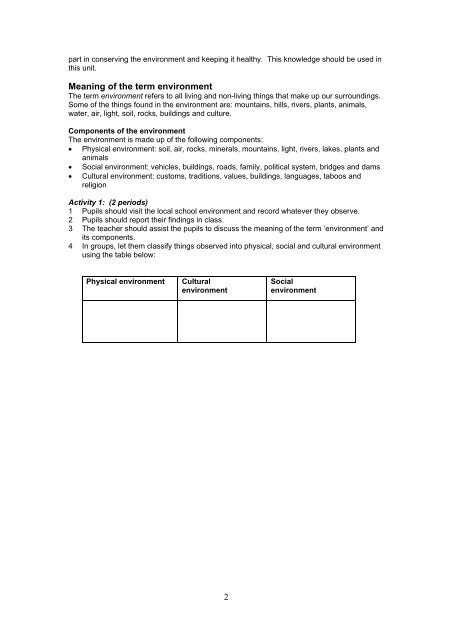Social Studies Supplementary Teacher's Guide for ... - EQUIP123.net
Social Studies Supplementary Teacher's Guide for ... - EQUIP123.net
Social Studies Supplementary Teacher's Guide for ... - EQUIP123.net
Create successful ePaper yourself
Turn your PDF publications into a flip-book with our unique Google optimized e-Paper software.
part in conserving the environment and keeping it healthy. This knowledge should be used inthis unit.Meaning of the term environmentThe term environment refers to all living and non-living things that make up our surroundings.Some of the things found in the environment are: mountains, hills, rivers, plants, animals,water, air, light, soil, rocks, buildings and culture.Components of the environmentThe environment is made up of the following components:• Physical environment: soil, air, rocks, minerals, mountains, light, rivers, lakes, plants andanimals• <strong>Social</strong> environment: vehicles, buildings, roads, family, political system, bridges and dams• Cultural environment: customs, traditions, values, buildings, languages, taboos andreligionActivity 1: (2 periods)1 Pupils should visit the local school environment and record whatever they observe.2 Pupils should report their findings in class.3 The teacher should assist the pupils to discuss the meaning of the term ‘environment’ andits components.4 In groups, let them classify things observed into physical, social and cultural environmentusing the table below:Physical environmentCulturalenvironment<strong>Social</strong>environment2
















